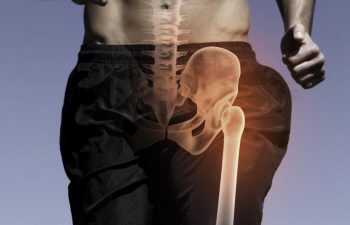
If you have pain in your hip, it could be caused by a condition called Femoroacetabular impingement (FAI), also known as hip impingement. This is a condition where the hip joint is unusually shaped, causing the bones to rub together, which can be very painful. Femoroacetabular impingement is a common cause of hip pain in adolescents and adults of all ages. There are several treatments for the condition, depending on the severity of the symptoms and the shape of the hip joint.
What Causes Symptoms of Femoroacetabular Impingement?
The hip joint is a ball-and-socket joint that attaches the top of the femur (ball) to the pelvis socket. Abnormalities in either or both of these bones cause friction during movement that can cause pain and further damage the surrounding cartilage.
The hip joint abnormalities are classified into three categories:
- Cam: Bony growth at the head of the femur.
- Pincer: Extra bone growth in the hip socket.
- Combined: A combination of both Cam and Pincer types.
The abnormalities are usually present at birth, but symptoms may only develop later on in life.
Symptoms of Femoroacetabular Impingement
Hip pain is the most common symptom of Femoroacetabular Impingement, especially when the pain worsens during physical activities or after long periods of sitting. Femoroacetabular Impingement can also cause stiffness in the hip, which can limit mobility. Some people with Femoroacetabular Impingement develop a limp, especially as the condition becomes more painful. Some people may not experience any symptoms; however, damage in the hip can continue to worsen and may lead to damaged cartilage and hip osteoarthritis. In most cases, Femoroacetabular Impingement cannot be prevented, but early treatment can prevent more damage to the hip.
Treatments for Femoroacetabular Impingement
A medical examination will determine the severity of the condition and the treatments available. Treatment can include physical therapy to help strengthen the joint and improve mobility. Corticosteroids and nonsteroidal anti-inflammatory drugs can help to reduce the inflammation in the hip. Corticosteroids are delivered by injection into the hip joint. Rest may also be suggested to reduce friction in the hip joint.
In some cases, surgery is suggested to correct the problem. Arthroscopic hip surgery is a minimally invasive surgery where the doctor removes the extra bone and any damaged bone and cartilage. After surgery, many people go on to live an active life without pain.
If you have hip pain or mobility issues, seek professional advice to prevent it from getting any worse. Book an appointment today with Robotic Hip and Knee Replacement LA with our online form or call us at (310) 792-9300.
Posted on behalf of
8436 West 3rd Street Suite 800
Los Angeles, CA 90048
Phone: (310) 792-9300
Email: fk@docsspineortho.com
Mon - Fri 8AM - 5PM